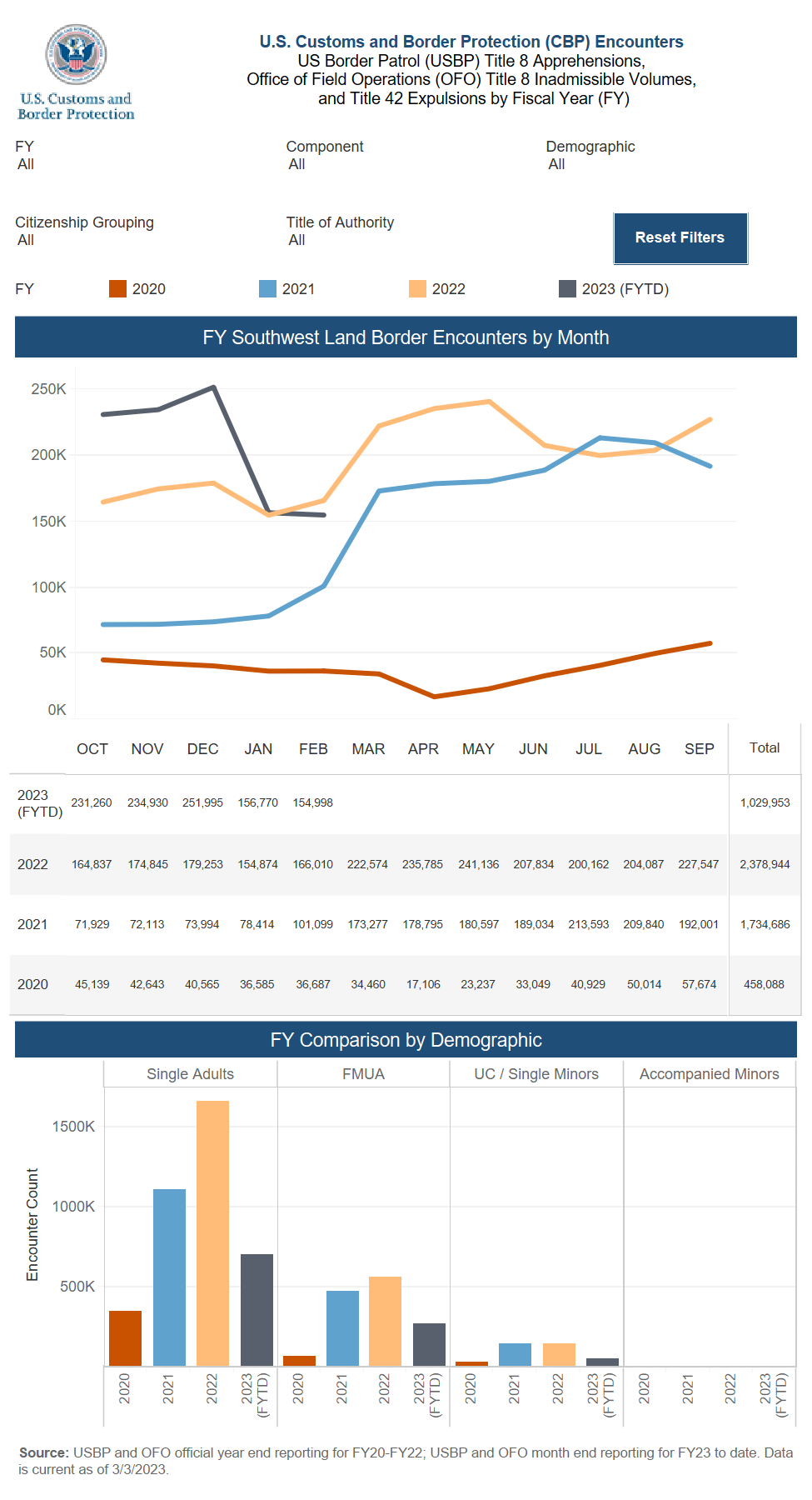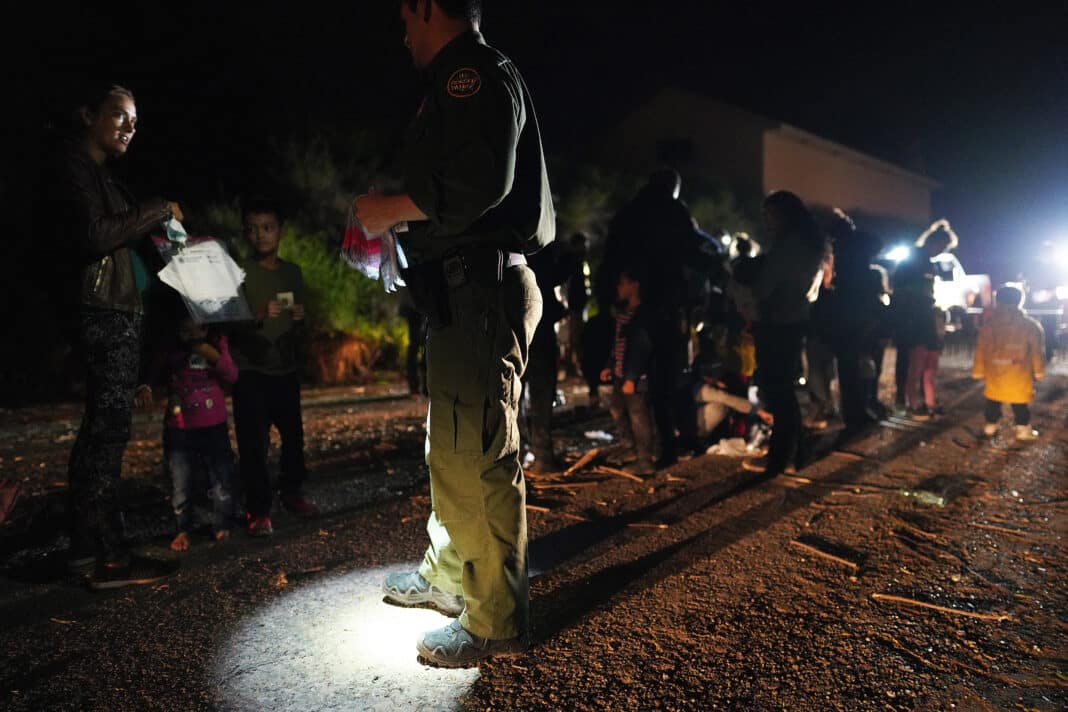
The number of people crossing illegally into the country steadied in February nationally and regionally, signaling a persistent downward trend for the current fiscal year. Even so, the Border Patrol chief on Wednesday explained new challenges on the border are placing a strain on their resources.
An almost even number of encounters were reported for February and January by U.S. Customs and Border Protection.
About 128,877 encounters were reported across the southwest border in February, about 36 less than the previous month. In the Valley, the number slightly increased by 50 more encounters from 14,915 in January to 14,965 in February.
The fiscal year was on trend to produce the highest number of encounters on record when it began in October, but in January the numbers dropped drastically, more than they had in at least the last four years.
The change was largely due to a change in policy that provided a new pathway to seek asylum than by requesting it after an illegal entry. It also penalized those who entered into the country illegally.

But on Wednesday, when Border Patrol Chief Raul Ortiz testified before a Republican Homeland Security Committee in McAllen, he said more consequences were necessary.
“You have to have capacity and you have to have consequences. And any time you don’t have consequences, you’re certainly going to see some increases,” Ortiz told the committee.
Ortiz explained the agency faces a unique challenge in the southwest border where currently five out of its nine sectors have a high number of border encounters. Historically, encounters were concentrated in one sector which would see high numbers as the Rio Grande Valley saw in 2014 and 2019. But after holding the busiest sector title for years, in 2019, the Valley was surpassed by El Paso and Del Rio for the first time.
Due to a lack of agreements with certain countries accepting their expelled citizens back, Ortiz said they face additional hurdles in reducing the number of people encountered along the border.
“We continue to try and repatriate individuals back to countries that we can repatriate. But it’s been a challenge for us, because what we saw last year were individuals from Cuba, individuals from Haiti, individuals from Nicaragua where we have a difficult time repatriating,” Ortiz said.
“It has been a significant challenge for us and I do think that has been a drive for some of the increases that we have seen.”
Republicans asked if the federal government maintained operation control of the border, a question which Department of Homeland Security Secretary Alejandro Mayorkas has previously testified it does. Ortiz, however, answered differently.
“Based upon the definition you have, sir, up there, no,” Ortiz replied to Rep. Mark E. Green, chairman of the committee. The definition printed on a large poster behind the chairman read: “In this section, the term ‘operational control’ means the prevention of all unlawful entries into the United States, including entries by terrorists, other unlawful aliens, instruments of terrorism, narcotics, and other contraband.”
Committee members suggested the policies enacted by the current Democratic administration led to the increase in immigration and praised President Trump’s controversial policies like the Migrant Protection Protocols, also known as Remain in Mexico. The program faced legal challenges in court and forced people seeking asylum to wait in Mexico for their immigration court hearings in the U.S., although many faced violence, even fatal, while living there.
“What policies need to be reinstated?” a committee member asked Ortiz.
“You can call it Migrant Protection Protocols. You can call it Remain in Mexico. You can call it a safe third country. All of the tools that Border Patrol and DHS have at their disposal are going to allow us to do a better job of managing this border,” the chief responded.
Aside from an increase in consequences, Ortiz said they are planning on supplanting costly surveillance equipment, known as aerostats, within the next six months, and adding more border infrastructure projects.
Ortiz informed the committee he requested the DHS secretary approve the completion of border wall projects abandoned midway when the new administration halted them.
“He has granted approval in, I believe, 29 of those projects already. And we have an additional slate of projects that we are going to be presenting to him,” he said.
Border Patrol personnel are also part of the plan to bolster security.
As the year progresses, Ortiz said he hopes the agency will increase its capacity to respond to the need along the border. The chief said the agency is working to hire more agents. In 2012, there were 21,370 agents, but now there are only 19,016. The goal is to hire 22,000.





